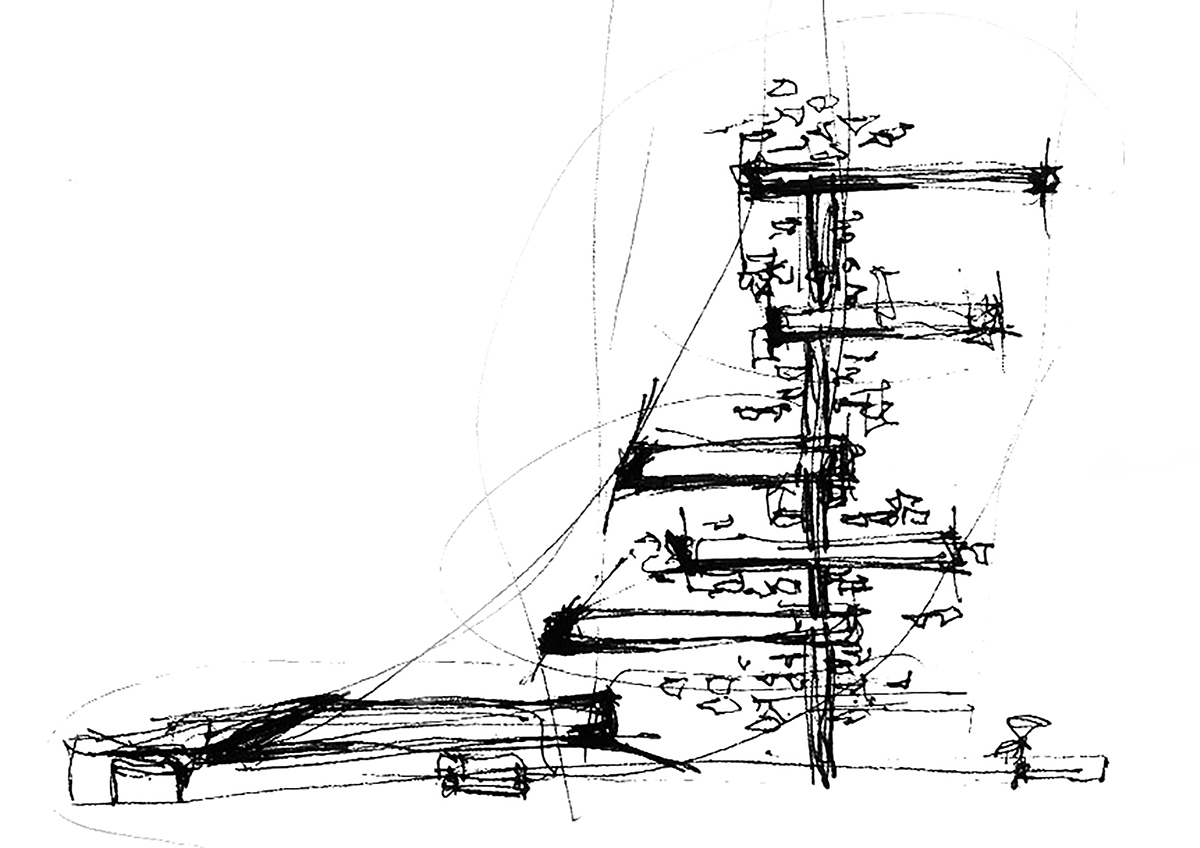Location
Chicago, Illinois
Typology
Mixed-Use High Rise / Sustainable
Status
Design competition entry
Date
2009
About
Evolo Skyscraper Competition Entry
Collaboration with Ryan Browne, Ben Scholten, and Nathanael Dunn
All cities suffer from pollution that tarnishes not only their own quality but that of the planet. One pollutant often overlooked and rarely considered harmful is noise. Sound is simply energy, and as concluded from Newton’s law of the conservation of energy, this energy is not lost to nothingness upon absorption. It is instead transformed into different forms of energy, the most prevalent resultant being heat: a process potentially contributing to our planet’s rising temperatures as cities continue to grow and leak more sound.
Why lose sound energy to unwanted heat gains when it can provide energy for essential building functions? The urban transducer utilizes noise pollution in Chicago by capturing airborne sound, converting it into usable energy, and using that energy to help power the skyscraper. This is achieved by acoustic panels that perceive present frequencies and tune metallic ‘bands’ to match the extant wavelengths, creating resonance through which energy is harvested from the noise. Each panel also remembers the most recurrent frequencies at its location, allowing preemptive adjustment to maximize efficiency.
Noise also influenced the tower’s form and appearance. Sound is pure when created, but human perception is distorted by contextual influences. Reflecting this condition, the habitable spaces (public hubs and private pods) are pure, simple forms that are perceptually altered and distorted by the screen systems (sound + wind) that obscure their simple forms.
Wind panels accompany the sound panels to optimize energy collection. Composed of miniature turbines, they harness all available wind power, even the most minute. Integrated throughout the entire tower, the wind panels are concentrated high (where wind forces are strongest and most consistent) and along the train tracks and roads (where transit creates airflow).
www.evolo.us/architecture/the-urban-transducer-skyscraper-produces-energy-from-noise-pollution
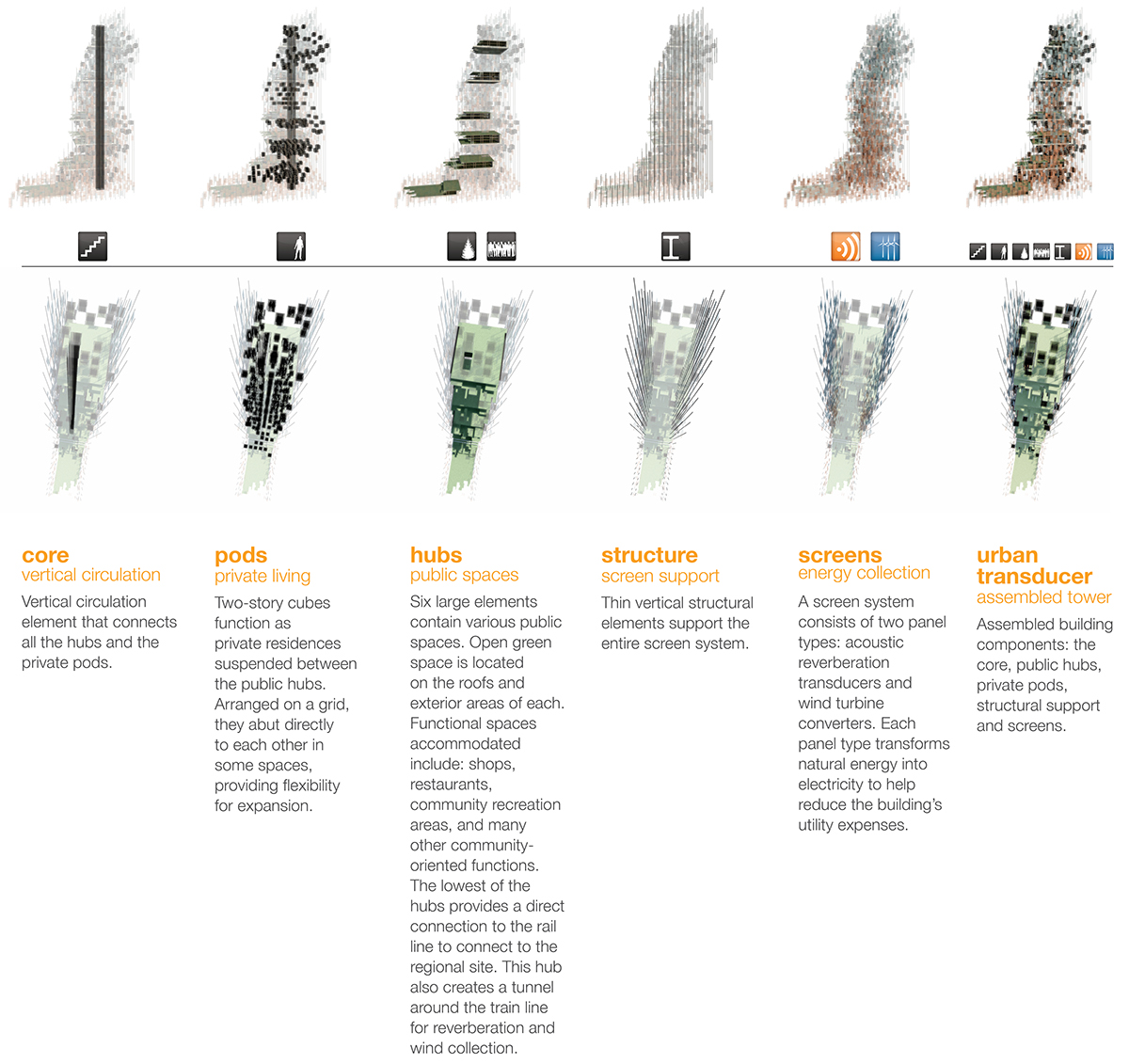
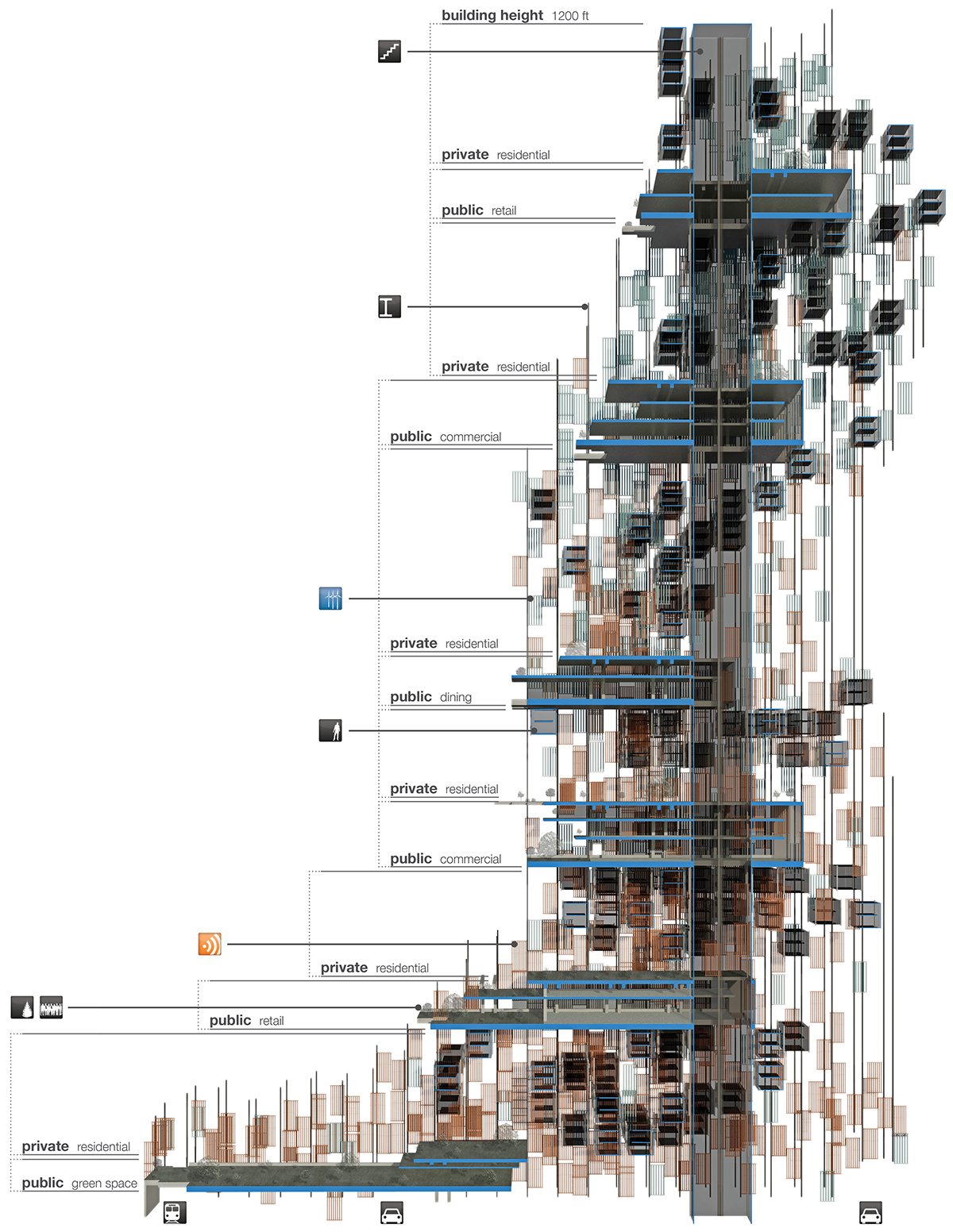

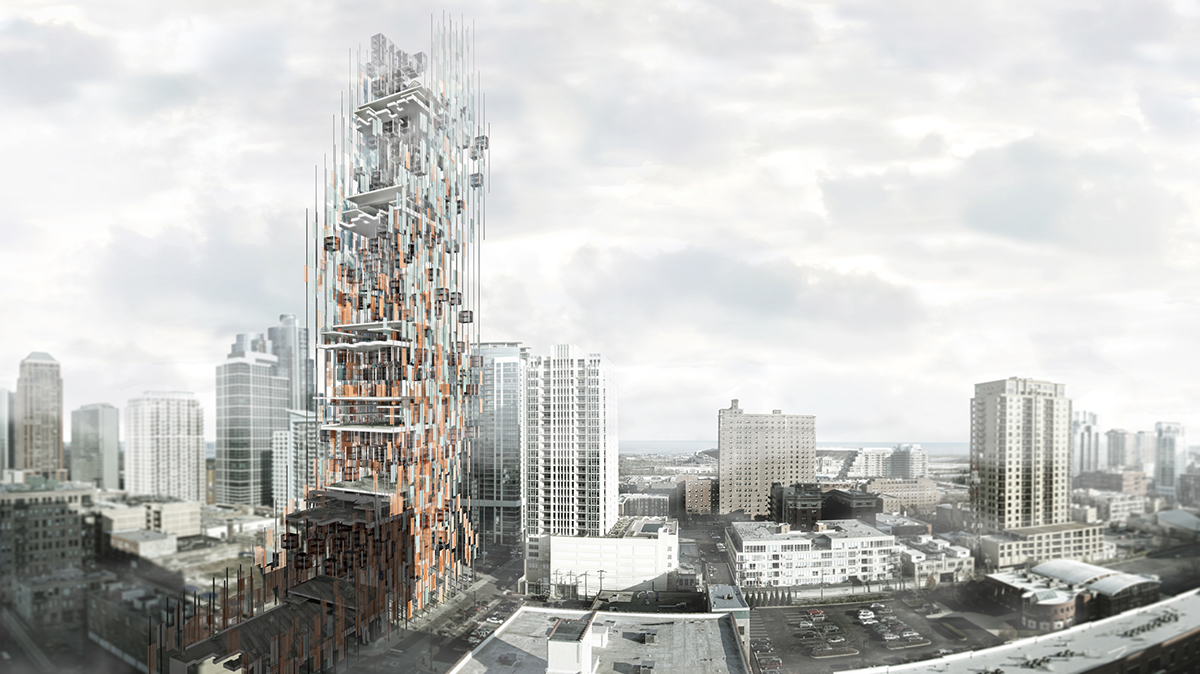
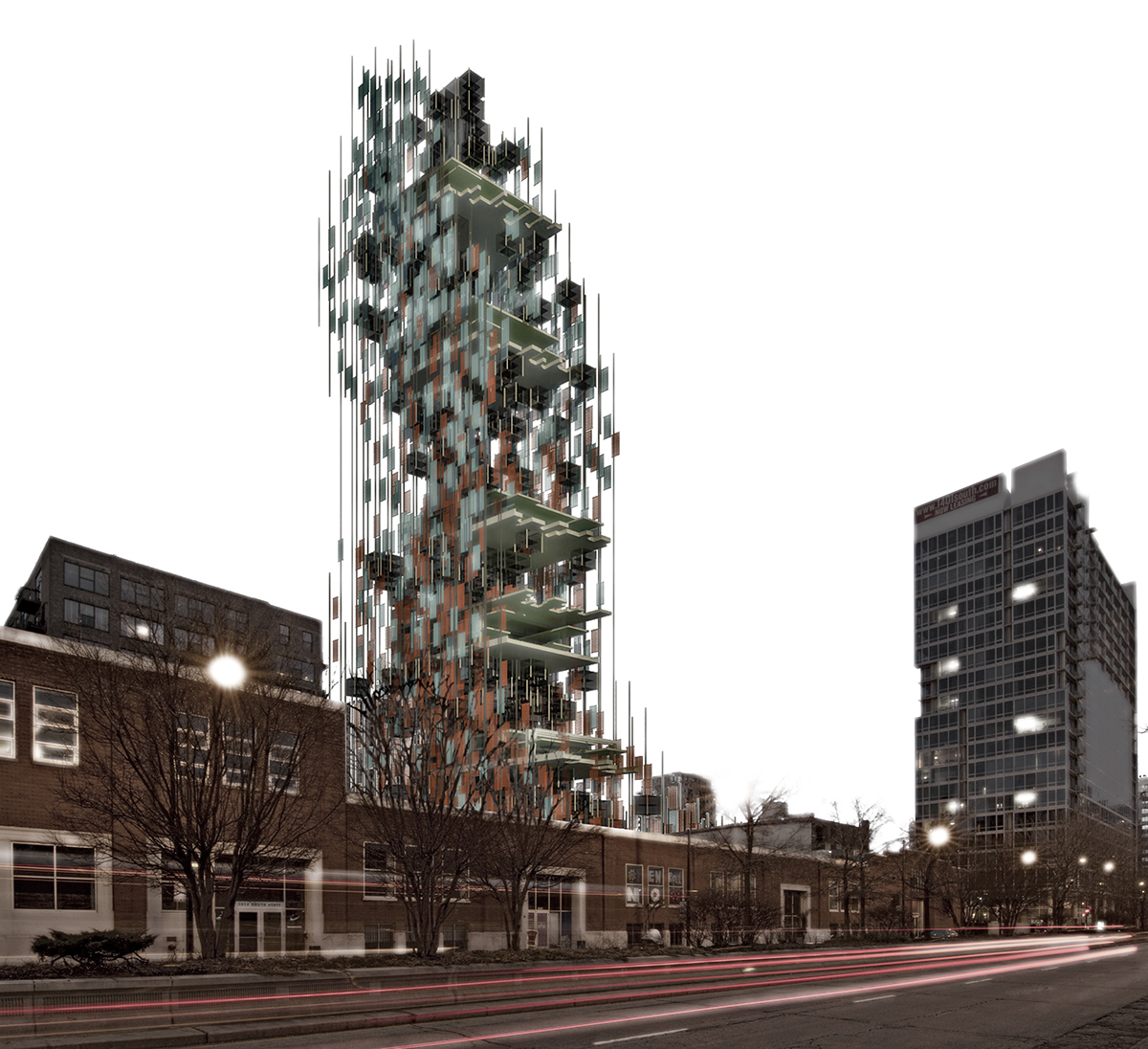
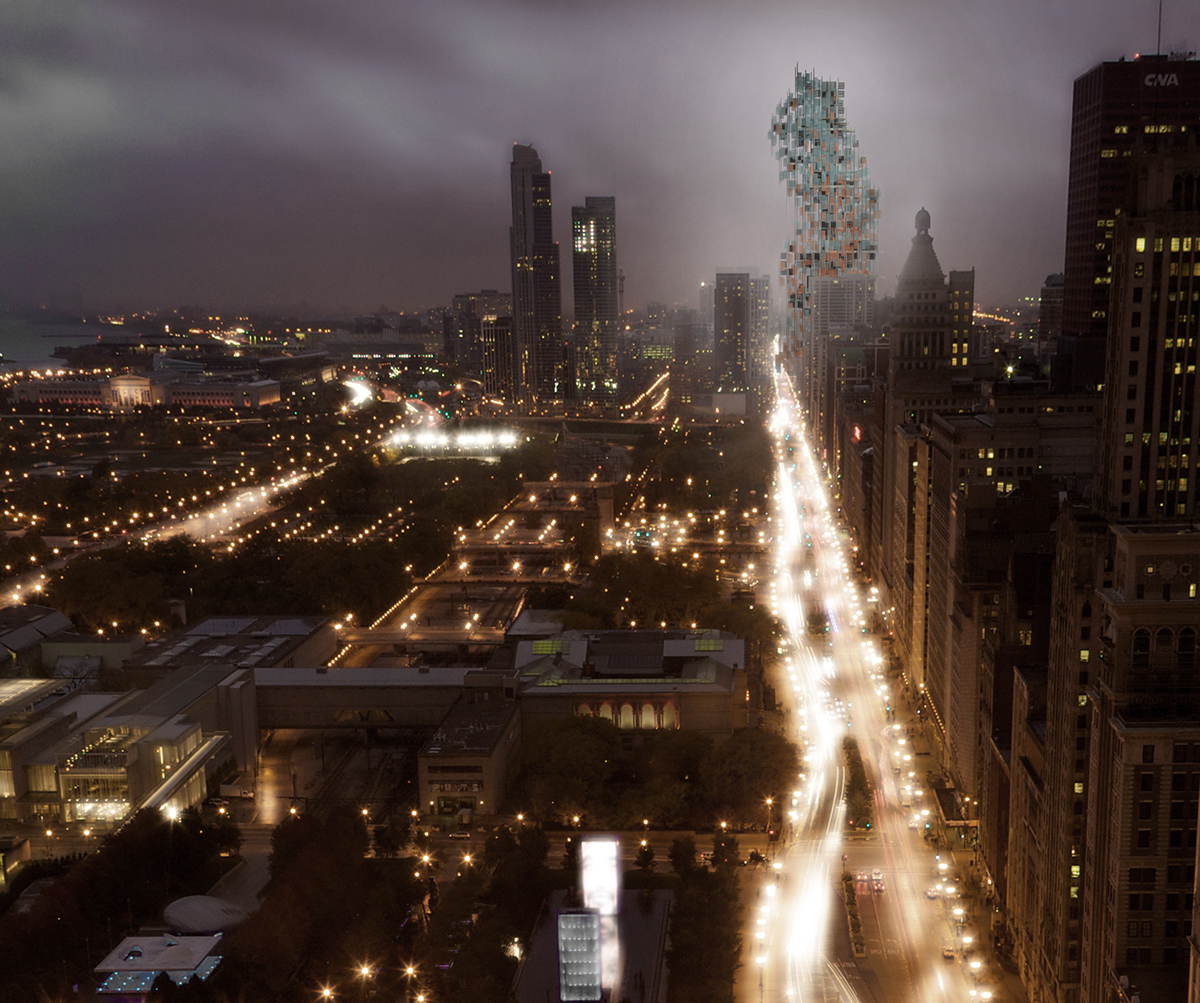
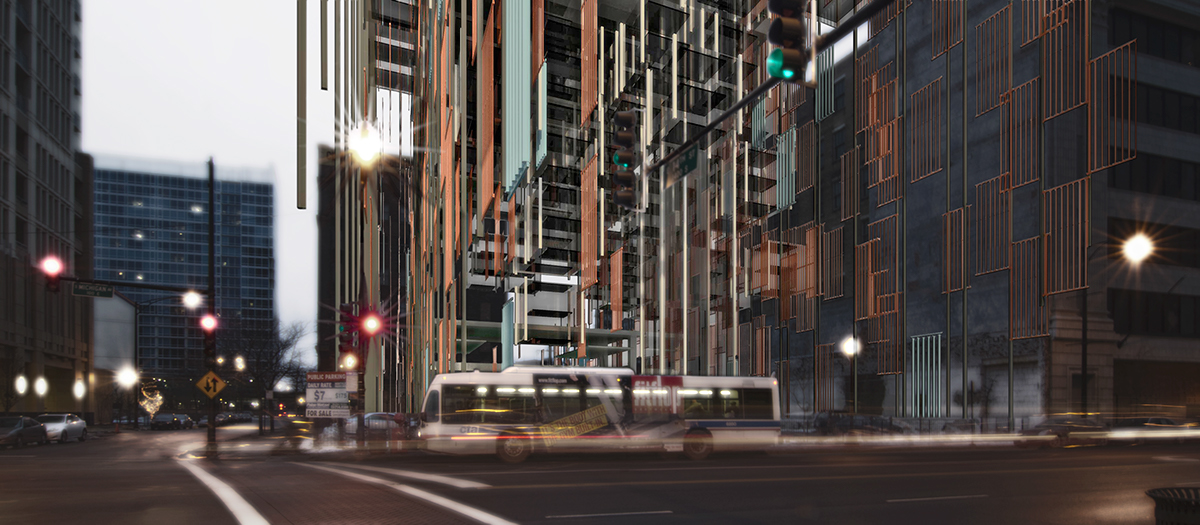
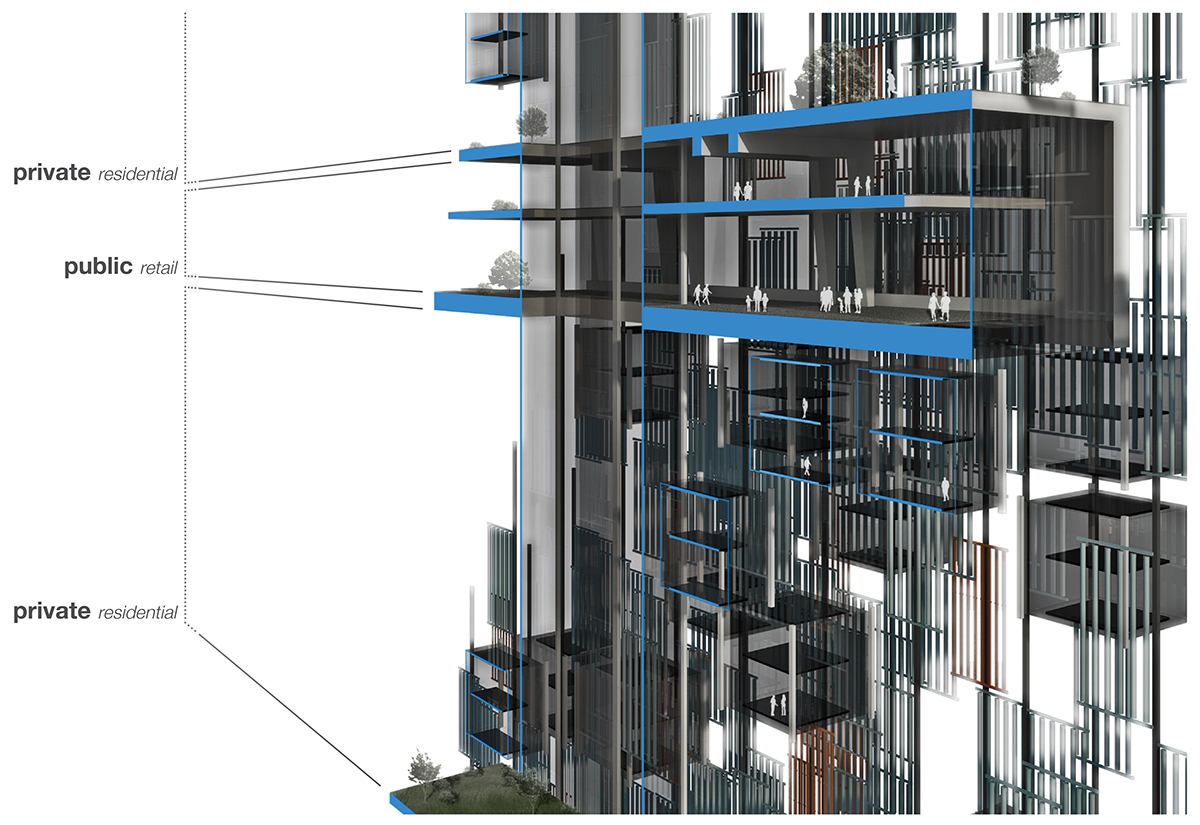
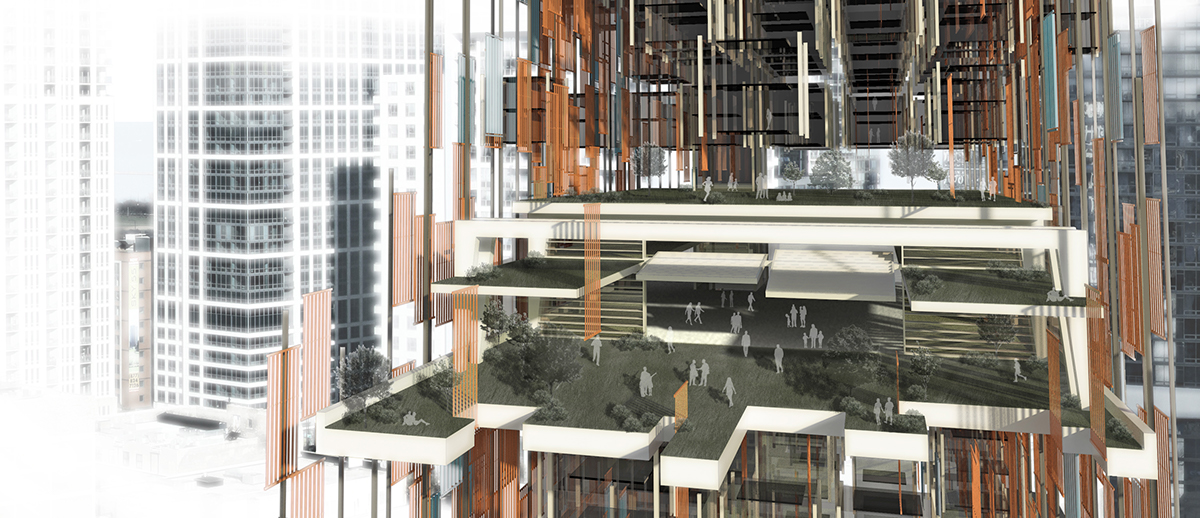
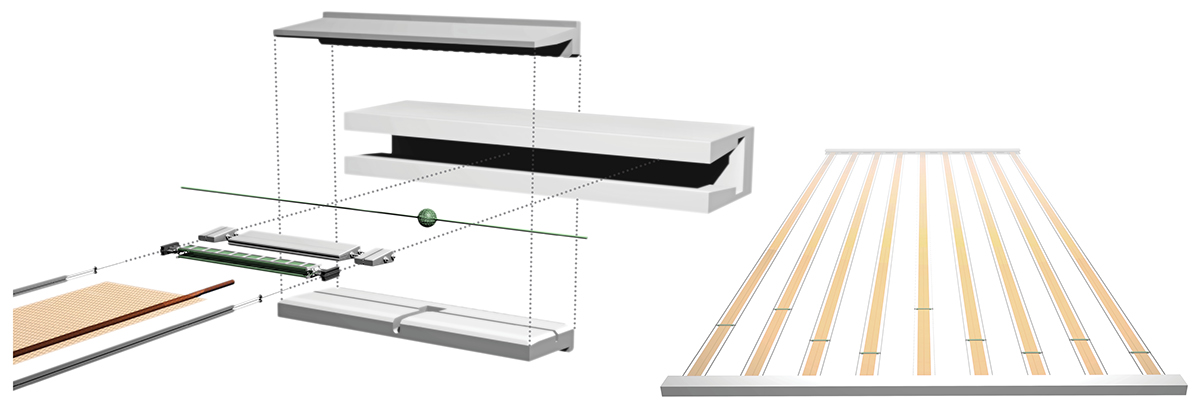
Acoustic Panel
As the tower’s skin, the acoustic panels are provided maximum exposure to city noise. Contextual frequencies vary greatly in this urban environment, encompassing people [pedestrians + building inhabitants], vehicles, trains, and even aircraft. Each 15’ x 30’ panel contains multiple metal bands with individual tuners, allowing the bands to resonate at different frequencies.
Tuning the bands requires sensors to be located throughout the building that constantly perceive present frequencies and inform the tuners how to appropriately adjust. The tuners function as clamps: they slide into position and compress, changing the bands’ effective lengths and therein their resonant frequency (Coalescing the bands with the contextual frequencies maximizes vibration amplitudes, improving the efficiency of sound collection). A magnetic rod wrapped in a copper coil runs the length of the metal strap, creating a magnetic field altered by every movement of the metal bands: a process called electrostriction. A piezoelectric transducer transforms the magnetic movements into an electrical current that is stored in a unit at the end of each band and then transferred to a building storage compartment that regulates the tower’s electrical needs.
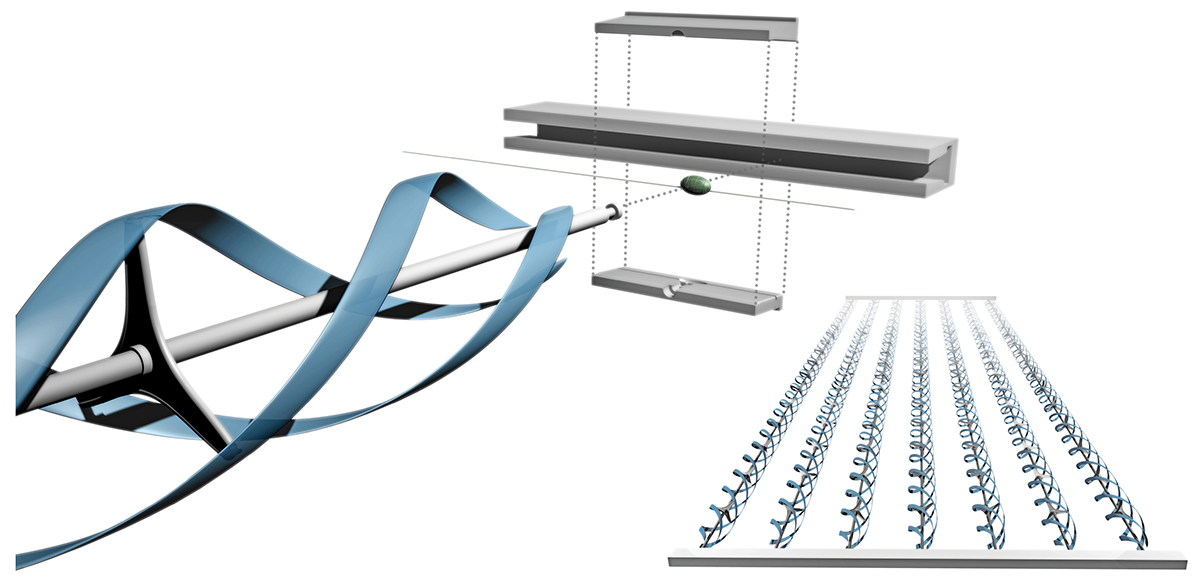
Wind Panel
Also integrated into the skyscraper’s skin, wind panels are located in areas of greatest intensity. The densest collection occupies the top of the tower where wind forces are strongest and most consistent, and they are also located over the roads and train line to take advantage of airflow created by busy city transportation. To accommodate the sporadic nature of transit-produced wind, the turbines used are small and multi-directional: every small wind force helps create energy for the tower.
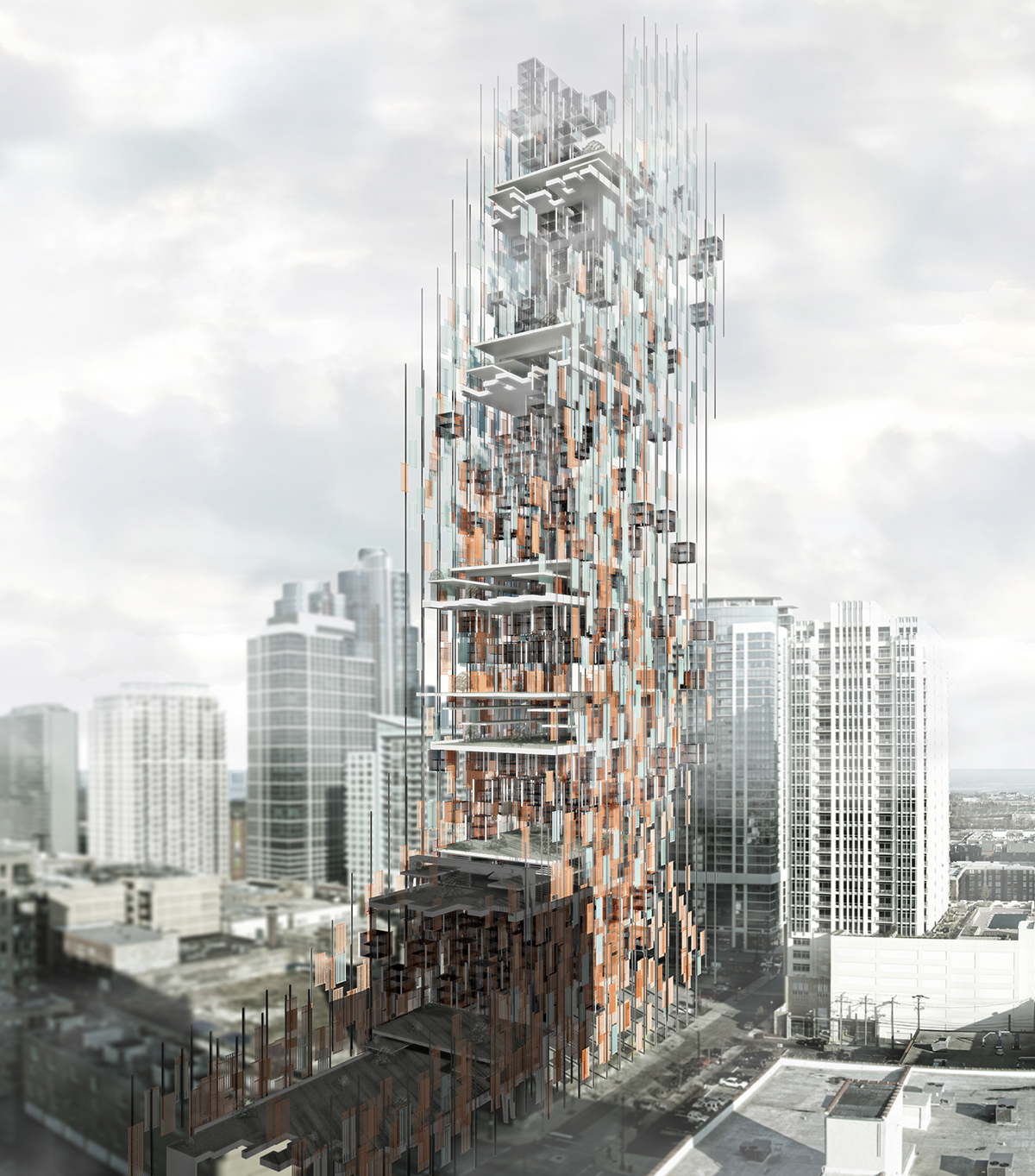
Design Process - Concept Sketch
